More than the eye sees: small-sized UAVs become an integral part of the battlefield
Vertical take-off system The Arcturus JUMP UAV is used only for take-off and landing.
Having proved itself on the modern battlefield, small-sized unmanned vehicles are increasingly expanding the range of tasks performed.
Small-sized unmanned aerial vehicles (MBLA) of the aircraft scheme, which previously occupied a small niche in special units, are now widely used by the armed forces, whether it be airborne foot patrols, advanced observation, or more complex tasks, such as electronic warfare.
In particular, operations in Afghanistan served not only as a testing ground for testing the technologies and capabilities of the MBA, but also contributed to their rapid development. While the main task of these systems remains the same - providing visual observation, reconnaissance and information gathering through optical-electronic and infrared cameras, their complexity has increased significantly.
The usefulness of the MBA is recognized without doubt, since the armed forces trust them to perform important combat missions; Such a growth of opportunities became possible due to the development of technologies and improvement of their characteristics in a number of areas.
"As for the duration of the flight, the appetites are simply insatiable here," said Kevin Lewilling, program manager at the Skunk Works division of Lockheed Martin, saying that customers want MBLA.
Manufacturers are trying to fill this appetite with various approaches, in particular, Skunk Works has focused on using fuel cell technology to power its Stalker UAV engine. The Stalker drone was developed in response to a request from the Advanced Advanced Defense Research Department DARPA (Defense Advanced Research Projects Agency) for MBLA with a long flight duration, which would have characteristics that exceed the typical characteristics of devices of this class.
The Stalker XE MBLA (extended endurance), deployed by the US contingent in Afghanistan, can be in the air for more than eight hours. The eight-hour flight of the Stalker XE provides its solid oxide fuel cell and wings with a span of 3,7 meters; the device also has a ceiling of more than 4500 meters and is completely inaudible from a distance of 120 meters. Lewilling did not give exact figures, saying only that Lockheed Martin passed through the 8 mark of the watch "with a good margin." Prior to that, with conventional batteries, Lockheed Martin was able to achieve an 4 flight duration of an hour.
Stalker is not the only Lockheed Martin MBLA operating on a fuel cell. The Desert Hawk EER (Extended Endurance and Range) is also based on a similar technology, only in this case, a fuel cell with a proton exchange membrane is used.
The main advantage of the use of fuel cells in MBLA is the increased flight duration, which is also converted into a large covered area and, ultimately, allows small-sized systems to perform certain tasks, usually performed by larger devices.
Fuel cells generate electricity through an electrochemical process; hydrogen stored as a gas, liquid, or solid form reacts with oxygen.
Considerable work has been done in this area and today a number of companies produce fuel cells that are installed on small-sized UAVs. However, they also have disadvantages, first of all, their cost in comparison with the cost of “traditional” batteries, as well as their large sizes. With a longer operating time, they have a lower power density and therefore, together with batteries, are often used in a hybrid configuration. Batteries provide peak power for some flight modes, such as take-off and climb.
Fuel cell development
В drone AeroVironment's Fuel Cell Puma uses a similar hybrid design. Along with a proton-exchange membrane fuel cell, it has a lithium-ion battery used to provide peak power during takeoff and short-term acceleration. In turn, the fuel cell recharges the battery and provides continuous steady-state electrical power during cruise flight.
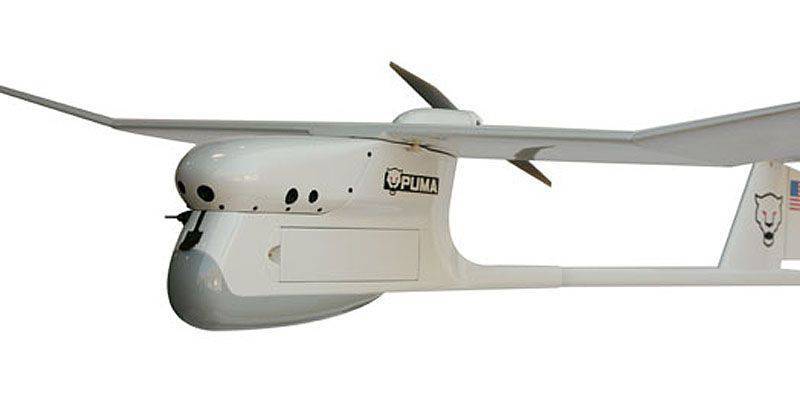
AeroVironment Fuel Cell Puma UAV
Proponents of the use of hydrogen fuel cells point out that the cost savings of the total lifetime that they provide outweigh the higher initial costs. Several companies are working to reduce the cost and size of fuel cells, as well as to improve their performance.
Their supporters also point to the fact that increased flight time has less impact on the aircraft and on-board equipment, since fewer landings are needed. Efficient control of the operation of fuel cells, such as generating energy at the most appropriate moment, is one of the most difficult tasks. Energy management systems should also effectively control the production of two by-products (water and heat) so that they do not harm or degrade the characteristics of the fuel cell, the apparatus itself or its on-board equipment.
In July, 2015, Israel Aerospace Industries (IAI) and Cella Energy announced that they are developing fuel cells to be installed onboard the Bird Eye 650 MBLA.
New in these works is that this device will be equipped with a solid hydrogen-based fuel system developed by Cella Energy. It is distinguished by a patented hydrogen storage material, the main advantage of which is the ability to take any form.
While fuel cells look promising, Dan Beechman, the head of a UAV unit at IAI, is pragmatic about how to achieve long flight times. "We want to have the maximum flight duration, whether it be fuel cells or new battery technology, it doesn't matter, I want to fly as long as I can."
In addition to the increased flight duration, the introduction of fuel cells and advanced batteries also makes it possible to integrate more complex and energy-intensive on-board equipment, as well as to expand its nomenclature.
MBLA are most commonly associated with optoelectronic and infrared on-board equipment, but its range of tasks is growing, mainly due to a combination of factors such as, for example, a reduction in weight, size, and energy-consuming characteristics of sensors. This allows you to install more complex systems, previously installed usually on tactical or even larger UAVs, on small aircraft. MBLA is currently capable of performing a variety of tasks, including reconnaissance by means of communications and electronic reconnaissance, detection and identification of targets, and work as repeaters of communications and special cellular communications nodes.
In addition to expanding the set of onboard equipment, operators also emphasize that new platforms should have an open architecture and should not depend on the type of sensors being installed. While such solutions cannot be economical or technically feasible for all UAVs, the newest MBLA and MBLA of the next generation are designed with a modular approach to installing equipment, which allows customers to integrate their own set of subsystems and not be tied to the proprietary equipment supplied by the manufacturer. often been in the past.
In addition, operators seek to take advantage of reduced weight, size and power-consuming characteristics and increased payload, and configure their devices for multi-tasking platforms that can carry several sets of equipment at the same time. Skunk Works has not lagged behind and has developed an Internet Protocol (IP) based architecture for its Stalker.
“The fact that it has an IP-based broadband network allows us to quickly integrate different sensor sets and communication systems at the same time, even the newest sensors,” explained Lewilling. “This allows the system to perform various tasks using the best-in-class sensors, and for us to quickly fulfill customer requirements.”
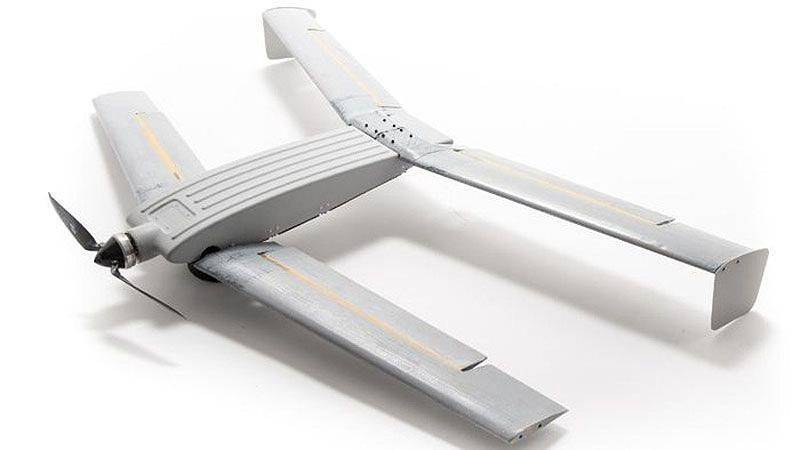
Vector Hawk Aircraft Scheme
Balance of power and carrying capacity
“If you want to send a small, similar apparatus to the sky on an 8 clock, it must do more than just transmit video,” added Lewilling. “Of course, more onboard equipment means more energy consumption [and additional mass] and therefore we worked with our fuel cell supplier to increase the energy intensity of our existing cells, and, in addition, we installed a new, more powerful fuel cell on our platform.”
This ability to accept various advanced on-board equipment sets allowed the MBA to encroach on the sphere occupied by larger systems. “I see that the set of tasks expands to the size that many of our customers expect from very large systems. Take, for example, the well-known Predator drone. This platform collects information in many ways: species intelligence, target recognition, all types of intelligence by means of communication. These are the areas we are working on and are aimed at, so we have already demonstrated many of them on our platform, ”said Lülling. “While adding more sophisticated sensors can be an engineering approach to expanding the set of tasks performed, the concepts of operations and characteristics of the UAV, such as their small size and low acoustic and visual signatures, also contribute to this.”
“I do not think that MBA will take over the tasks of tactical level systems. I see that they cover areas that you can’t close with other drones, for example, if you need to take off from the ground with a UAV like Searcher or Hermes 450, this will not work because you need a runway for takeoff and landing, ”continued Beechmen. . - We are also talking about flights at low altitudes, with large systems you will have problems due to the quality of the radio. With Searcher drone, for example, there are problems of this kind. If you need to fly at low altitude, if the weather is bad or cloudy, with the Searcher UAV it will be difficult to do this, because as you move away most of the flight time you need to climb, you need direct visibility from the ground control station. With the 650D drone you can take off from the field and fly low under the clouds. ”
The low acoustic signatures (signs of visibility) of the Stalker drone are one of its key features, which gives it an advantage when it comes to onboard equipment. Lewilling remarked: “Keep in mind that Stalker is a relatively silent system, that is, we can fly much lower, which translates into the fact that there is no need to put sensitive or expensive devices on the platform to get essentially the same end result as with the drone, which, because of its noise, you have to run much higher. "
A number of manufacturers strive to create innovative drones designs so that operators can perform their tasks with greater functional flexibility.
Lockheed Martin's Vector Hawk MBLA design allows for various configurations based on the general fuselage and the main flight support systems and equipment sets.
“Our plan is to create a very dynamic platform, which has several aerodynamic schemes with one common body. We believe that this strategy will very well meet the needs of customers and give them flexibility in deploying their systems, ”explained Jay McConville, director of development of unmanned solutions at Lockheed Martin.
The device can be configured as a platform with a fixed wing, vertical take-off or landing (VTOL) or as a quadrocopter with turning screws. It has a standard fuselage capable of receiving various sets of wings. A drone, launched from a tubular rail, was also developed, in which the wings unfold when the tube leaves the tube. The drone is made of foam covered with composite materials, has a body-fuselage with two attachment points for the wings (one in the front part under the fuselage and the second in the rear part at the top of the fuselage), to which the operator attaches various wing configurations. The variant launched from a pipe has folding wings. The low profile fuselage has a height of 9 cm and a length of 60 cm, and all configurations have a width of 60 cm.
While performance depends on the configuration of Vector Hawk, there are several common elements. The device has electric motors and a lithium-polymer battery, it can be controlled through a data channel with high capacity at distances up to 15 km.
Its programmable radio station can operate on a mixed network (3G, 4G and cellular LTE) and supports wireless reconfiguration. She can also use various communication protocols.
Vector Hawk UAV has a payload of 340 grams and can be equipped with day and infrared cameras and laser illumination devices.
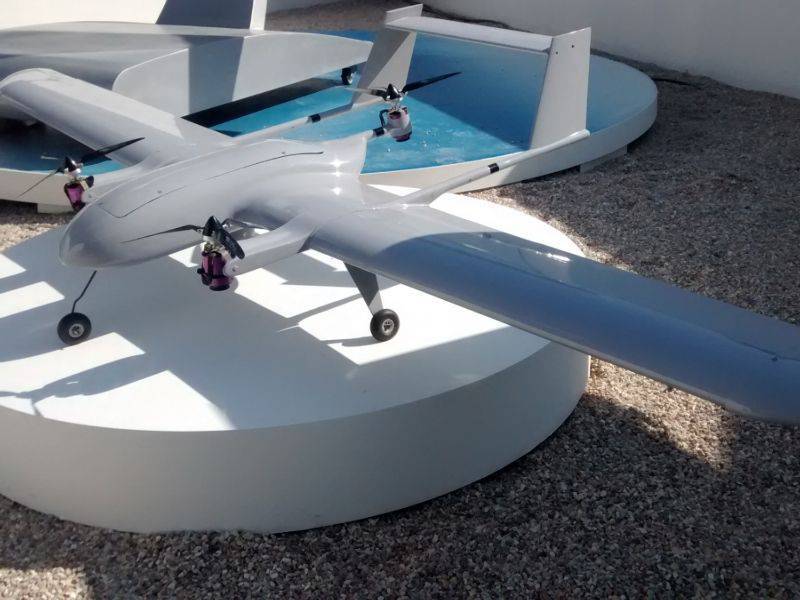
Mini Panther provides functional flexibility through its rotary screw design.
The mGCS console is platform independent and has a convenient interface.
Vertical take-off and landing
According to McConville, a significant problem in the development of Vector Hawk was to try to make sure that the characteristics of the device did not deteriorate due to its multi-configuration scheme. "This is a difficult problem ... you could have come to the lowest common denominator and get a bunch of separate systems, but we decided not to do that."
McConville said Vector Hawk options with folding and fixed wings fly and these systems were delivered to unrevealed customers; development of other configurations is ongoing.
The Israeli company IAI has developed a small-sized UAV with turning screws, which the company believes will provide operators with a high level of operational flexibility. The Mini Panther has a wingspan of an 3,5 meter and a maximum take-off weight of 12 kg, including 2 kg of payload. The drone has a range of 20 km, a typical 450 ceiling meters and a flight duration of about 2 hours.
“The main advantage is that this is a fully tactical system. You take it with you to the field, it takes off and sits vertically flies and performs its task as a normal twin-engine drone. When you need to plant the device, you only need to give him the coordinates and he will sit down automatically, - said Bichmen. - I believe that VTOL's capabilities are in demand mainly because in this case there are fewer restrictions on the platforms from which you can take off and land. At the end of the day it is much easier for the operator to find a place that does not require any preparation; there simply should not be big obstacles; for the operator, everything is simplified. "
Beechman noted that when designing the Mini Panther, it was necessary to overcome design problems. “There are two problems ... A very difficult problem is to get a fully automatic system that can take off and land vertically and fly like a normal twin-engine plane, it takes a lot of time, but the system can do it just by pressing a button. The second problem is the duration of the flight. We are talking about the electric propulsion, that is, you have restrictions on the batteries that you use. When you hang out during takeoff and landing, you need a lot of energy. "
The Mini Panther is still to be commissioned, but Beechman said that IAI has a demo system that was shown to potential buyers, and that the device is quite ready for deployment from a technical point of view.
The JUMP 15 and JUMP 20 systems from Arcturus UAV implement a similar approach. The JUMP device is different from the Hybrid-Quadrotor system from Latitude Engineering. Two sets of screws are installed at an angle 90 ° to each wing - one at the back and one in front. Each screw block also has a battery pack.
After completion of the vertical lift and the beginning of a horizontal flight, the screws come out of the engagement and do not participate in setting the vehicle in motion or maneuvering it; the screws are placed longitudinally in order to minimize aerodynamic drag. When landing the system screws again engages.
Facilitating the burden placed on operators in control is a key design principle that most manufacturers seek to implement in the MBA. These drones, as a rule, work in conditions where a high degree of involvement in the flight of an aircraft is undesirable (for example, when deploying at the front lines) or managed by personnel with limited piloting skills. Implementation in MBLA of high level of automation and even autonomy is welcomed.
User-friendly operator control consoles are an essential element here; now console consoles with simplified interfaces and familiar control devices have become the norm. Many consoles have touch screens and control handles (joysticks) like game consoles, to which operators are accustomed; they are often performed as single-block devices in which the screen and the controls are combined.
However, a balance is necessary, and in this regard, Mr. Beechman believes that reliability and functionality should be the basic principles of design and warns against using commercial products that are already available. "Smartphones and tablets are good for normal use, but for military applications, I see no advantages, because you need something that can work in almost any environment."
Unification and interoperability are also very important, as operators cannot afford to carry multiple control units. In order to meet these requirements, many manufacturers are currently producing control units that comply with the NATO standard STANAG 4586, that is, those that can work with any compatible UAV.
Lockheed Martin has also developed a mobile ground control station mGCS (mobile ground control station), which runs on VCS-4586 software and is compatible with the STANAG 4586 standard. The software is designed to work with portable computers (tablets, laptops, etc.) and specialized controllers, which, as a rule, have small joysticks and touch screens.
The program can simultaneously display various data, including interactive maps and data from sensors, and allows operators to redefine and change tasks on the fly and has complete control over the drone’s on-board equipment. The mGCS station also features an application development software package that provides UAV manufacturers with the ability to integrate other systems and capabilities.
The mGCS has functions that allow operators to focus on the task, not on the UAV’s flight control. Here, as an example, the component of automatic collision avoidance with the ground, which prevents operators from giving commands to heights below a given elevation and thus reducing the likelihood of a mini-plane crash, can be given.
“We started the development of this platform and therefore we can train anyone to work with it. From the very beginning, we have implemented many automated and autonomous elements and therefore the platform does not require active (on a regular basis) control from the operator, ”said Lewilling, emphasizing the design principles of Stalker.
“There are many sensors on the platform that help direct, control and monitor its condition throughout the flight. If you want to control the device more manually, we can also provide it. There are modes that allow you to turn on what we call driving. But here we have taken into account everything that can be taken into account, even in these modes, the drone does not get out of control and again enters flight mode when it becomes unsafe. That is, we were insured by integrating various controls into the platform, we actively manage emergencies and make the flight as safe as possible. ”
Operations in the Middle East and Afghanistan have served as a good testing ground for many of the most modern MBLA.
While there are improvements in payload, flight duration, etc. are the natural ways of development of UAVs of this class, their deployment at the front lines means that durability and reliability are the first aspects of design.
ArrowLite features a powerful engine and all-weather capability.
Reliability around the head
“I think the most important thing is the operational reliability of the system,” said Beechman. - Simplicity is also important. It should be very simple for users in the field, with a very simple operating system and a small amount of logistic service ... it should also be operational day and night. You need to fly at any time of the day, you need a very simple, very reliable working system. ”
A number of manufacturers strive to ensure and improve the adaptability of their systems for operation in adverse conditions and introduce the ability to work in any weather - one of the main limitations of the use of the MBA.
The needs of the operators can be understood by the example of a request for information released in 2014 by the US Army, with a description of systems that could meet the requirements for the new MBA.
Among the performance requirements set forth in the request were the following: the system should take off and return at a wind speed of at least 20 nodes, with a target value of 30 nodes; work in the snow and in the rain with an intensity of 6 mm per hour; to work without breakage for eight hours with chemical, biological and radioactive contamination; withstand water landing and stay afloat for at least 15 minutes without penetration of water into the sea at sea state 1 (0,1 meter); operate at temperatures from -36 ° C to + 55 ° C. Information request also provides for field service, in addition, based on 10 hours of operation per day, the availability threshold should be 85% and the target value 90%.
In addition, to the fore again come more powerful engines, as a consequence of a more powerful on-board power source, as well as the strength of the airframe.
Lockheed Martin has improved the performance of its Desert Hawk platform. Her UAV Desert Hawk IV has a more powerful engine and battery, which makes it easier to launch this unit. The previous options were harder to launch, the operator was required physical strength and a good launch technique; therefore, when possible, the soldiers launched a drone from a moving quad bike.
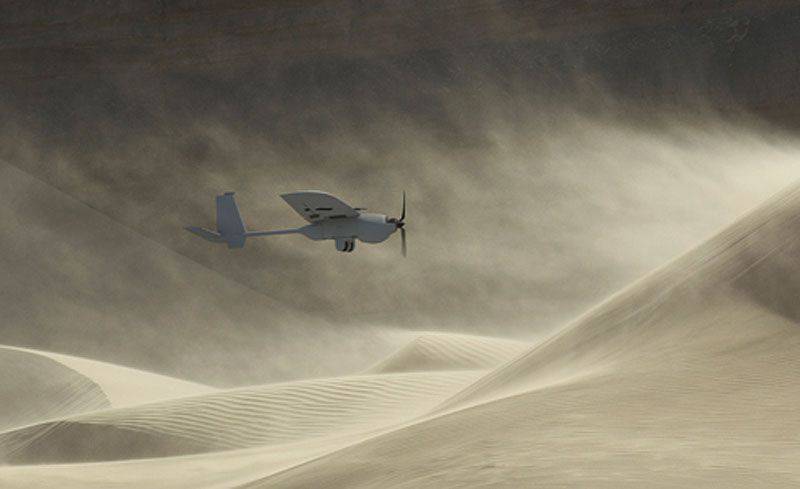
Desert hawk iv
Another significant change was the implementation of the new scheme of returning the device. If the apparatus of the Desert Hawk III on landing fell into its component parts in order to dissipate the forces acting on him, then the Desert Hawk IV has a high profile for landing at a critical angle of attack, which improves accuracy; it is also equipped with a gel cushion, which absorbs forces upon landing, and this eliminates the need to break up into pieces.
In turn, Elbit Systems has developed for the Skylark I-LEX drone (the last version of the Skylark family) a wing design with greater functional flexibility, which allows for better control during launch and during a flight in high winds.
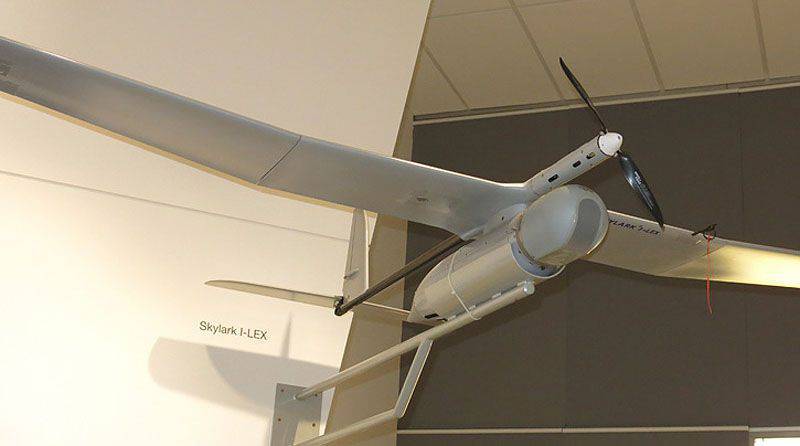
Skylark I-LEX drone
The company Stark Aerospace (a division of the Israeli IAI), based in the United States, developed the MBLA, which is based on the strength and simplicity of working with it; the company claims it is the only tactical UAV that one operator can handle. ArrowLite drone was delivered to US special forces for evaluation; It has a very interesting feature - thanks to its powerful engine, it can be started from a prone position.
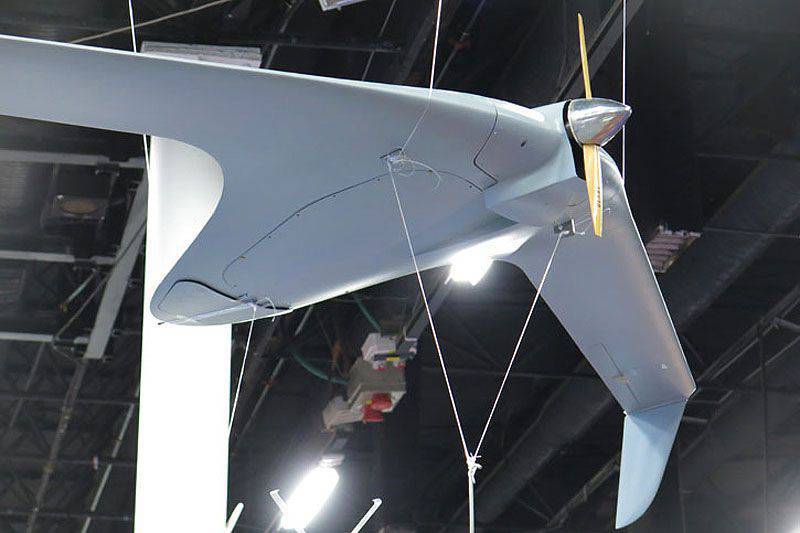
IAI has integrated an advanced fuel cell into its Bird Eye 650 UAV.
The newest model 421-16EM of the Russian company ZALA Aero Group belongs to the new generation of MBA
Emphasis on vitality
The issues related to the survivability of UAVs of all classes were mainly focused on their suitability for flight work, mainly due to the rather simple nature of the airspace in which they mostly fly.
However, there are quite a few cases of shooting down drones in areas with good air or ground defense against UAVs. For example, Israel shot down many Hezbollah vehicles, Georgia also lost several systems during the conflict with Russia in 2008, and therefore, problems related to survivability have a great impact on UAV projects lately.
For MBLA, survivability was largely not an indicator, since such systems relied on their small size, and operators were less concerned about the loss of UAVs due to their lower cost and value on the battlefield.
But, since their range of tasks has expanded, and the development of systems specifically for the fight against MBA has begun, the question arises of adding a particular type of protection for devices of this class.
“Vitality is a small part of a global approach,” says Lewling. - For this class of balance is between the vitality that you want to integrate into the platform, and the effect that you want to achieve. I would say that we have a very good balance of small size and low acoustic signature, which is quite rare in platforms of this class. ”
If it is impossible to add protection systems in the form of false targets and dipole reflectors in MBLA, the integration of anti-jamming systems is more feasible from a practical point of view. This issue was further aggravated after individual cases of electronic jamming of UAVs that worked within the framework of the OSCE (Organization for Security and Cooperation in Europe) mission in Ukraine.
“We have always focused on communication ... it’s clear that customers want a stable connection and want to be sure that their systems are secure. How they achieve this really depends on what is available to them, how much it costs and how much reliability they want from their platforms, ”McConville said.
In the case of Camcopter drones, which the OSCE involved in Ukraine, Schiebel solved the problems by installing a special anti-jamming system, although it is not clear to what extent this affected the platform’s characteristics.
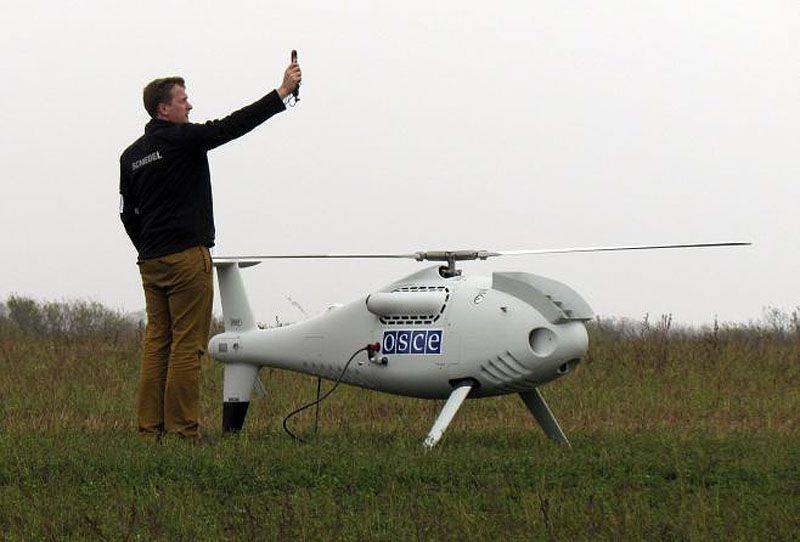
MBLA Camcopter worked in Ukraine
In the process of expanding the range of systems, a key element is their usefulness. In addition, reliable and encrypted communications are very important, especially when expanding the frequency bands that are needed to support new devices.
“Digital communications and extended communication ranges will be key to the continued expansion of the range of tasks performed,” said McConville. - Today we are limited to direct visibility, but over time this will certainly change ... Therefore, you should have a device with a long duration of flight and a communication system with which you can solve this problem. Our company has a larger platform, Fury, which has a satellite communication system onboard, available for the entire set of equipment, a large bandwidth channel, and a system of over-the-horizon communication. And life shows that the transition to small platforms is inevitable, because buyers want to have a long flight. When you increase the duration of the flight, then they will want to go even further, these things are inextricably linked. ”
Comment
The MBA market is the most saturated in comparison with the UAV market of all other classes, mainly due to the relative ease with which companies develop basic systems.
Systems available on the market today can be quite radically different in their capabilities. The systems of the first row can be attributed, above all, platforms tested in combat conditions, primarily the production of companies such as Elbit Systems, IAI and Lockheed Martin.
This gap can manifest itself in the emergence of a “class of many classes” when advanced systems demonstrate increased flight duration and ability to deploy with advanced sensors, while numerous small competitors offer systems with limited capabilities.
However, this is also a class in which a number of less generally recognized manufacturers are able to take their “place in the sun” and enter the market with competitive products.
For example, the Russian company ZALA Aero Group and the Turkish Aselsan and Vestel already offer their high-performance systems and, most likely, the competition in this market will increase.
Materials used:
www.lockheedmartin.com
arcturus-uav.com
www.avinc.com
www.iai.co.il
www.elbitsystems.com
zala.aero
www.osce.org
www.schiebel.net
www.wikipedia.org
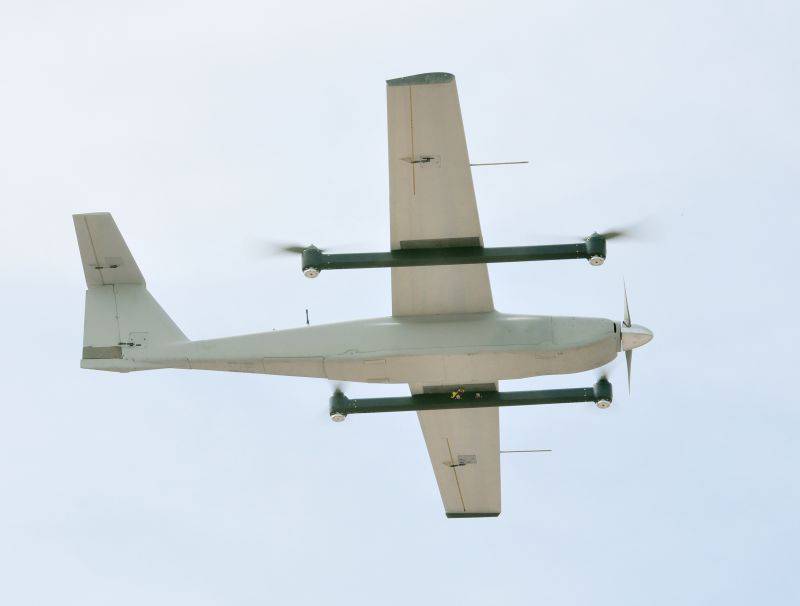
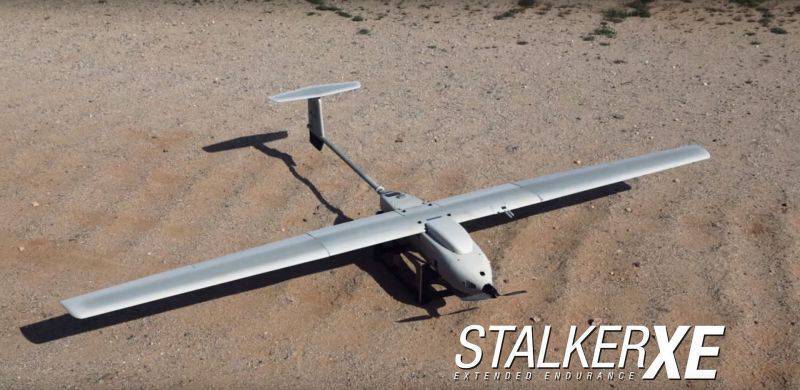
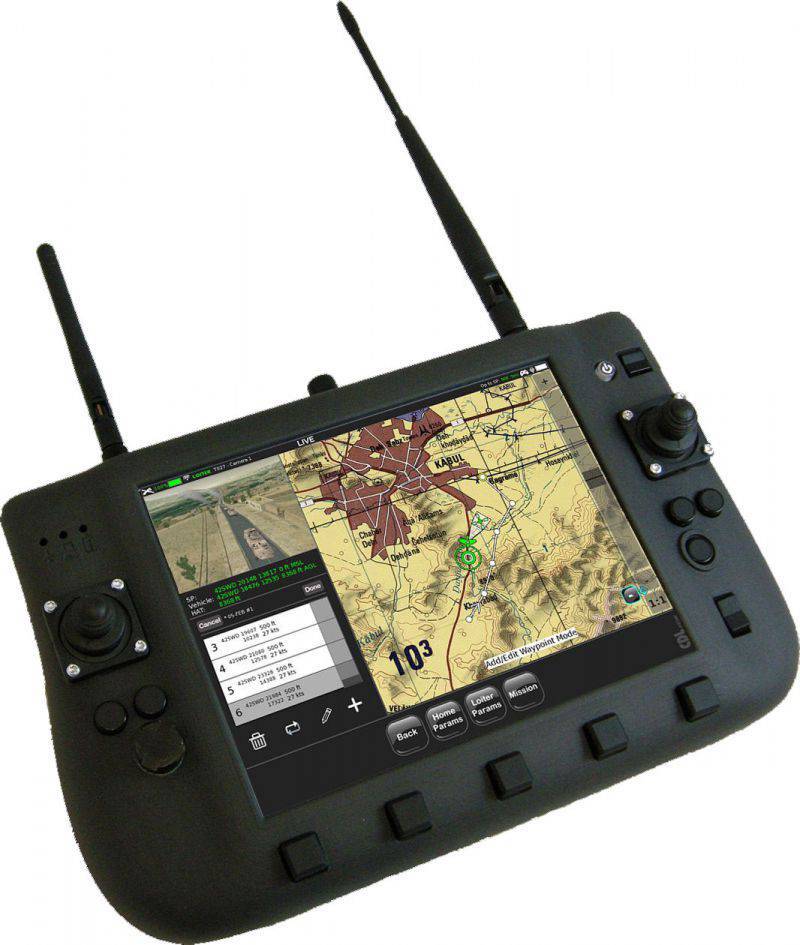
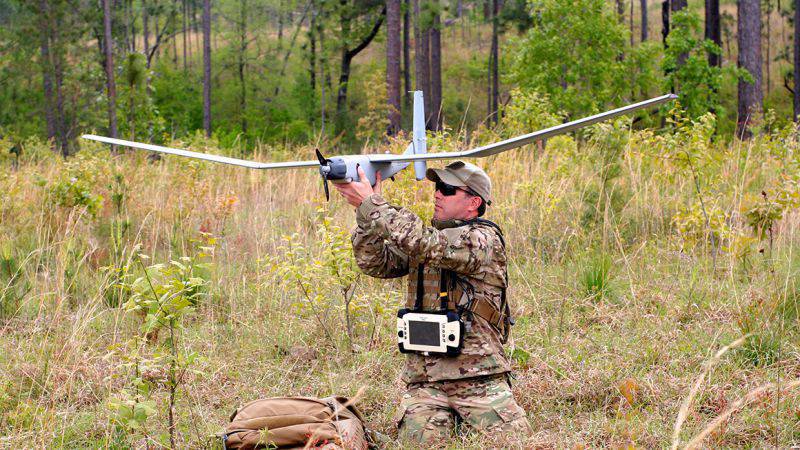
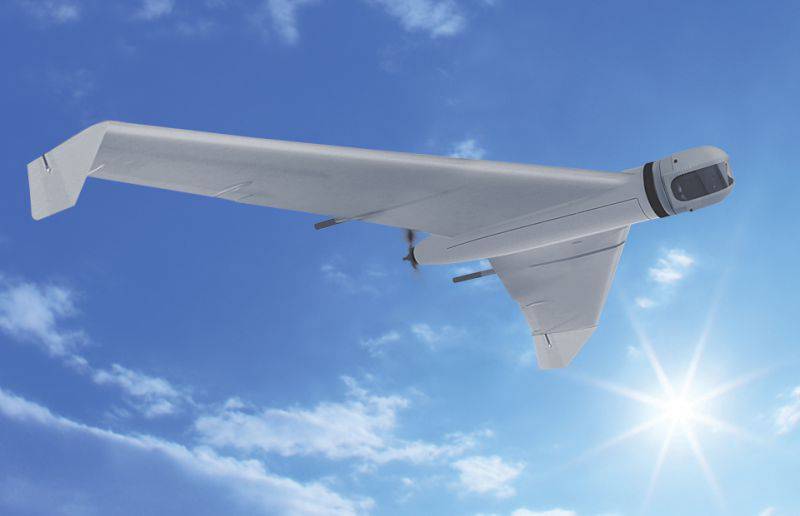
Information